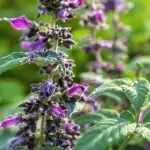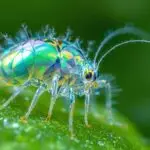Thiamethoxam breaks down within 60 days, but soil can retain it for over 90 days, especially in wet conditions. In aerobic environments, its half-life ranges from 34.3 to 464 days. You should know that microbial activity plays a key role in its degradation. Heavy rainfall can increase leaching risks, potentially contaminating groundwater. Although levels found are usually below EPA benchmarks, they still pose risks to ecosystems, particularly for non-target species like pollinators. To grasp the broader implications and regulatory concerns surrounding its use, keep exploring this important topic.
Key Insights
- Thiamethoxam degrades in soil within 60 days, while its metabolite clothianidin can persist for years, influencing environmental impact.
- Microbial activity is essential for thiamethoxam breakdown, with strains like *Acinetobacter* and *Pseudomonas* showing significant degradation rates.
- Leaching of thiamethoxam into groundwater is higher post-harvest, especially after heavy rainfall, posing contamination risks.
- Its aquatic half-lives range from 16.2 to 35.1 days, with microbial degradation and photolysis contributing to dissipation in water bodies.
- Regulatory measures, such as reduced maximum residue levels in the EU, aim to protect pollinators and mitigate ecological risks from thiamethoxam usage.
Environmental Persistence
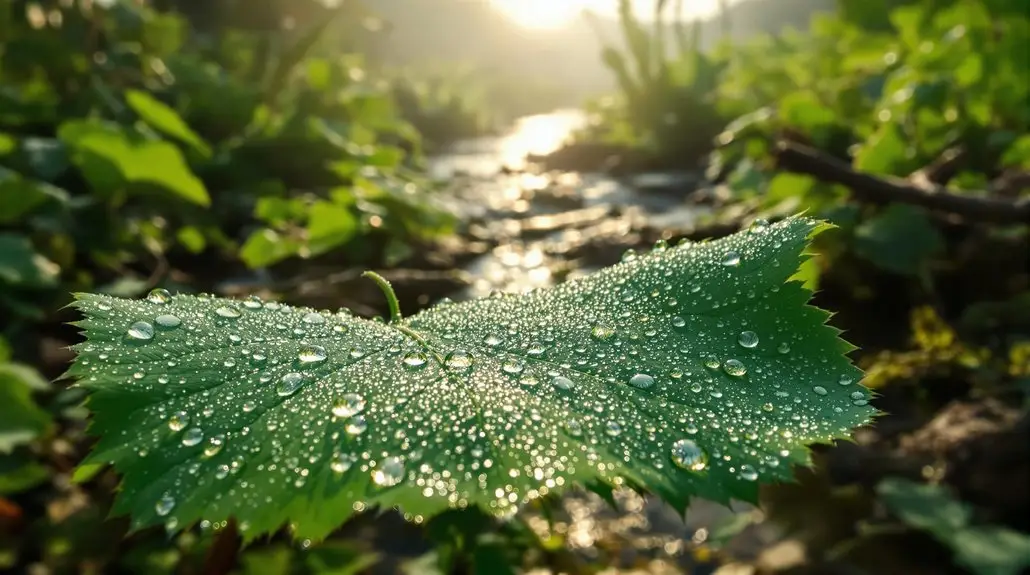
Environmental persistence refers to how long a chemical remains in the environment before breaking down. In the case of thiamethoxam, it decomposes in less than 60 days, but its metabolite, clothianidin, lingers in soil for years. If you’re concerned about the environment, knowing these details is essential.
In Minnesota, thiamethoxam levels in groundwater reach up to 1.365 parts per billion (ppb) and 0.223 ppb in surface water, which are below the EPA’s benchmark values. However, just because they’re below the threshold doesn’t mean there aren’t ecological risks. This pesticide, part of the neonicotinoid class, effectively manages pests but poses significant threats to pollinators and aquatic life.
You might wonder how thiamethoxam’s persistence affects local ecosystems. For instance, it can reach wetlands through runoff, impacting zooplankton communities and altering food web dynamics. Additionally, the systemic nature of thiamethoxam means that it can disrupt natural biological controls, endangering insect predators that consume contaminated prey. This is particularly concerning given the potential harm to predatory insects that play a crucial role in pest management.
If you’re part of a community invested in sustainable practices, understanding these risks is important. The agricultural sector’s reliance on thiamethoxam—especially in seed treatments—raises concerns about long-term environmental health.
While it has proven beneficial for crops like corn and soybeans, the implications for pollinators and other wildlife can’t be ignored. By staying informed, you can advocate for responsible usage and contribute to a healthier ecosystem.
Degradation Pathways
When you look at the degradation pathways of thiamethoxam, you’ll find that microbial activity plays a key role in breaking it down in soil. Major degradates have been identified, highlighting the importance of understanding these processes for environmental management. Utilizing data visualization tools can further aid researchers in illustrating the degradation pathways and their impacts on the environment.
Major Degradates Identified
Identifying major degradates of thiamethoxam reveals significant compounds that can impact environmental and human health. One of the primary degradates, clothianidin (CGA-322704), is toxicologically notable and raises concern due to its own registered insecticide status.
Other major degradates like CGA-353042 and CGA-355190 emerge in field studies, highlighting the complexity of thiamethoxam’s breakdown. NOA-404617, retaining the N-nitro group, poses even higher toxicity, suggesting that not all degradates are created equal. TMX is a persistent contaminant in water bodies, which emphasizes the need to monitor these degradates closely.
You’ll also find minor metabolites, such as CGA-330050 and CGA-265307, which show different plasma concentrations in mice and rats, indicating varied metabolic responses.
The pathways leading to these degradates include the cleavage of the oxadiazine ring and processes like reduction and hydrolysis. While some degradates can be more toxic, others might be less concerning.
Understanding these major degradates is essential, as they can persist in the environment and potentially affect ecosystems and human health. By staying informed, you can contribute to a more responsible approach to using chemicals like thiamethoxam, supporting both environmental integrity and community well-being.
Microbial Soil Degradation
Microbial soil degradation of thiamethoxam involves a variety of key microbial strains that play an essential role in breaking down this pesticide. Strains like *Acinetobacter* sp. (THIA-3), *Enterobacter* sp. (THIA-4), and *Bacillus* sp. (THIA-7) efficiently degrade thiamethoxam, achieving degradation rates of 94.72%, 90.78%, and 82.06%, respectively.
Remarkably, *Pseudomonas* sp. can break down 70% of thiamethoxam within 14 days, showcasing the effectiveness of these microbes. Additionally, the isolate *Acinetobacter* sp. (THIA-3) demonstrated the highest degradation efficiency among the tested strains, highlighting its potential for bioremediation applications.
The degradation process primarily occurs through nitro-reduction, hydrolysis, and oxidation, involving specific enzymes like amidase. These pathways not only facilitate the breakdown of thiamethoxam but also suggest potential for similar neonicotinoids like acetamiprid.
Environmental factors, such as pH and temperature, greatly influence degradation rates, emphasizing the importance of conditions for peak microbial activity.
As you engage with soil health and restoration efforts, remember that using microbial consortia can enhance bioremediation strategies.
Soil and Aquatic Fate
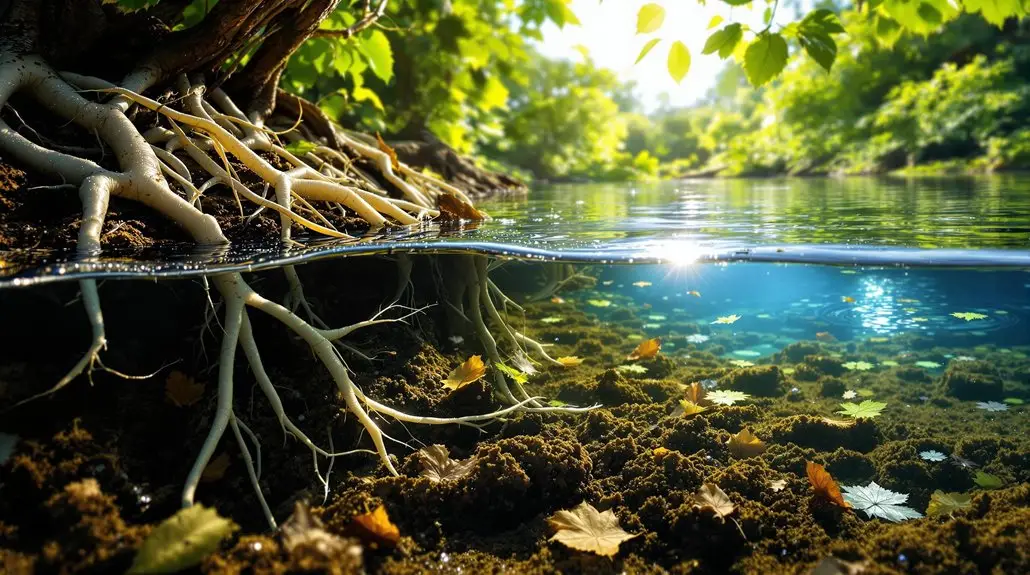
When you consider the soil and aquatic fate of thiamethoxam, you’ll notice how its leaching dynamics can lead to groundwater contamination. In aquatic environments, the pathways for contamination highlight the compound’s rapid degradation and formation of various metabolites. Understanding these processes is essential for evaluating the environmental impact of thiamethoxam use. Recent studies indicate that greater leaching occurs post-harvest compared to the growing season, which further complicates the potential for groundwater contamination.
Soil Leaching Dynamics
Soil leaching dynamics play an essential role in understanding the environmental fate of thiamethoxam, a widely used insecticide. You’ll find that its persistence in soil can extend beyond 90 days, depending on moisture conditions. For instance, dry conditions can lead to a much longer persistence compared to submerged soils. This is particularly concerning because under heavy rainfall conditions, thiamethoxam has a significant potential for leaching.
Here’s a quick overview of how these factors interact:
| Moisture Condition | Half-Life Range (days) | Leaching Potential (%) |
|---|---|---|
| Dry | 200.7 – 301.0 | Low |
| Field Capacity | 91.2 – 94.1 | Moderate |
| Submerged | 46.3 – 75.3 | High |
| Heavy Rainfall | N/A | 66 – 79 |
| 65 cm Rain Equivalent | N/A | Significant Leaching |
You can see that when heavy rainfall occurs, thiamethoxam has a significant leaching potential, which means a large percentage can be found in leachate. Additionally, soil organic matter plays an important role in delaying this leaching, ensuring that thiamethoxam doesn’t wash away immediately. Understanding these dynamics helps you better grasp the environmental impacts of thiamethoxam.
Aquatic Contamination Pathways
Aquatic contamination pathways for thiamethoxam highlight the essential connections between soil and water systems. You’ll find that spray drift and runoff are primary routes for thiamethoxam to enter surface waters.
Once in the environment, microbial degradation—whether aerobic or anaerobic—plays an important role in breaking it down. Additionally, aqueous photolysis contributes to its dissipation in water bodies.
Thiamethoxam’s persistence in soil varies considerably, with half-lives ranging from 34.3 to 464 days in aerobic conditions and 45.6 to 118 days in anaerobic conditions. In aquatic environments, half-lives fall between 16.2 and 35.1 days under aerobic conditions and 20.7 to 28.6 days in anaerobic ones. You’ll notice that contamination levels in surface waters can reach up to 225 ppb, which can harm invertebrate populations, especially in ephemeral ponds. High persistence of thiamethoxam in the environment increases its chances of leaching into these waters, creating risks for aquatic ecosystems.
Understanding these pathways is essential for protecting our water resources and the delicate balance of aquatic life.
Environmental Impact Assessment
Understanding the environmental impact of thiamethoxam requires a thorough assessment of its fate in both soil and aquatic systems.
You’ll find that in soil, thiamethoxam can persist for months to years, with half-lives ranging from 34.3 to 464 days under aerobic conditions. This means it can accumulate, affecting soil-dwelling insects considerably—reducing beetle fertility by up to 50% even at low concentrations. These findings provide a mechanistic explanation for insect population declines, highlighting the urgent need for soil pollution reductions to protect biodiversity.
In aquatic environments, thiamethoxam breaks down more quickly, with half-lives of 16.2 to 35.1 days. However, in clear, acidic water, it dissipates rapidly.
Still, the presence of harmful degradates, like clothianidin, poses concerns for the health of aquatic organisms.
Exposure and Health Effects
While thiamethoxam is effective for agricultural pest management, exposure can occur through various routes that may pose health risks. You might encounter this pesticide through food consumption, especially if you eat produce treated with it. Contaminated drinking water from surface and groundwater can also expose you to thiamethoxam.
If you work in agriculture, you may face dermal and inhalation exposure, particularly during application or when entering treated areas. Homeowners applying the pesticide in their gardens can similarly be at risk, as can workers involved in seed treatment. Notably, a study has shown that TMX concentrations can be detected in various organs after exposure, highlighting the potential for accumulation in the human body. Additionally, the Integrated Pest Management (IPM) approach emphasizes safer alternatives to chemical pesticides, which can help mitigate exposure risks.
Health effects of thiamethoxam are concerning. Toxicological studies show it primarily affects the liver, kidneys, testes, and blood cellular systems in mammals. In rats, developmental neurotoxicity has been observed, raising alarms about acute exposure risks. Long-term exposure has linked thiamethoxam to liver and testicular issues.
For humans, high doses can lead to neurotoxicity, manifesting as tremors and reduced motor activity. Although thiamethoxam doesn’t bioaccumulate, it’s essential to recognize that even low-level exposures can accumulate in your system, leading to potential health effects.
Risk assessments indicate that while thiamethoxam is “not likely to be carcinogenic,” individuals with high exposure levels may experience significant developmental toxicity. By understanding these risks, you can make informed choices about your exposure to thiamethoxam and advocate for more secure practices in your community.
Environmental Detection and Impact
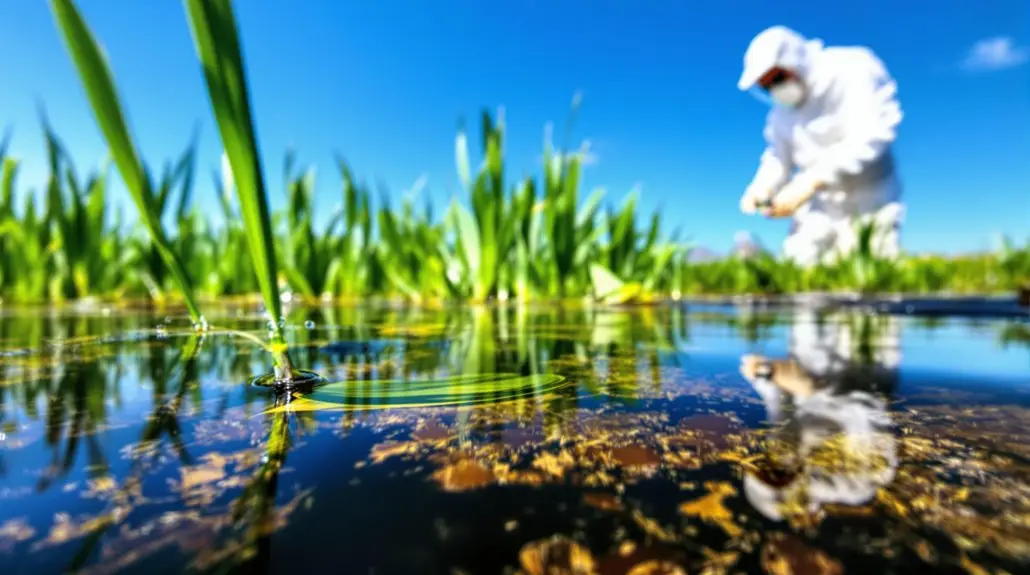
Thiamethoxam’s presence in the environment raises significant concerns for ecosystems and human health. As you engage with nature, you may be alarmed to learn about the various ways this chemical can impact your surroundings.
The persistence of thiamethoxam in the environment can lead to serious consequences for both wildlife and water quality. Here’s what you need to know:
- Non-target Organisms: Pollinators like bees and other beneficial insects face dire threats from exposure.
- Water Contamination: Thiamethoxam can seep into water sources, endangering aquatic life.
- Soil and Air Pollution: The chemical can linger in soil and even become airborne, affecting air quality.
- Ecosystem Disruption: Over time, its intensive use disrupts the delicate balance of local ecosystems.
- Long-term Persistence: With a half-life ranging from days to months, thiamethoxam’s lingering presence can have lasting effects. Detection limits achieved through advanced methods like solid-phase extraction demonstrate the chemical’s trace presence in environmental samples.
Detection methods like chromatography and advanced sensors help monitor thiamethoxam in various environments, ensuring we’re aware of its presence.
While techniques like QuEChERS effectively quantify residues in agricultural products, the alarming potential for long-term environmental impact can’t be ignored.
Regulatory and Safety Aspects
Regulations surrounding thiamethoxam reflect growing concerns about its environmental impact and protection. In the EU, its approval expired on April 30, 2019, primarily due to fears over its detrimental effects on bee populations.
Now, thiamethoxam’s use is restricted to greenhouses, and emergency authorizations are no longer permitted following a European Court of Justice ruling in January 2023. Health Canada continues to accept its registration but mandates additional risk mitigation measures to protect aquatic invertebrates, as some uses of thiamethoxam meet current environmental protection standards.
You’ll also find that maximum residue levels (MRLs) for thiamethoxam have been meaningfully reduced in the EU, now ranging between 0.01 and 0.05 mg/kg. These changes affect exporters of a variety of agricultural products, as compliance with these new limits will be required from March 7, 2026.
Import tolerances can be applied for, but they need to demonstrate security for pollinators. Security assessments have shown that outdoor use poses considerable risks to bees, prompting the EU to aim for products free from thiamethoxam.
Internationally, the FAO has set specifications for thiamethoxam, impacting global trade. Brazil has enacted legislation to limit its application, focusing on soil or seed treatments to protect pollinators.
As you navigate this complex regulatory landscape, it’s essential to stay informed about the evolving standards surrounding thiamethoxam, ensuring that security and environmental health remain a top priority.
Conclusion
In summary, understanding thiamethoxam’s environmental fate is essential for protecting ecosystems. Its persistence and degradation pathways reveal the delicate dance between chemical use and ecological balance. As you navigate the complexities of soil and aquatic fate, remember that every action can ripple through our environment.
At NaturePest Holistic Pest Control, we believe in making informed choices that safeguard our ecosystems. By staying educated about exposure, health effects, and regulatory measures, you can help ensure that this powerful insecticide doesn’t tip the scales of nature too far. Join us in our commitment to sustainable pest management practices that prioritize both effectiveness and environmental health. Together, we can create a balanced approach that protects our planet for future generations.


